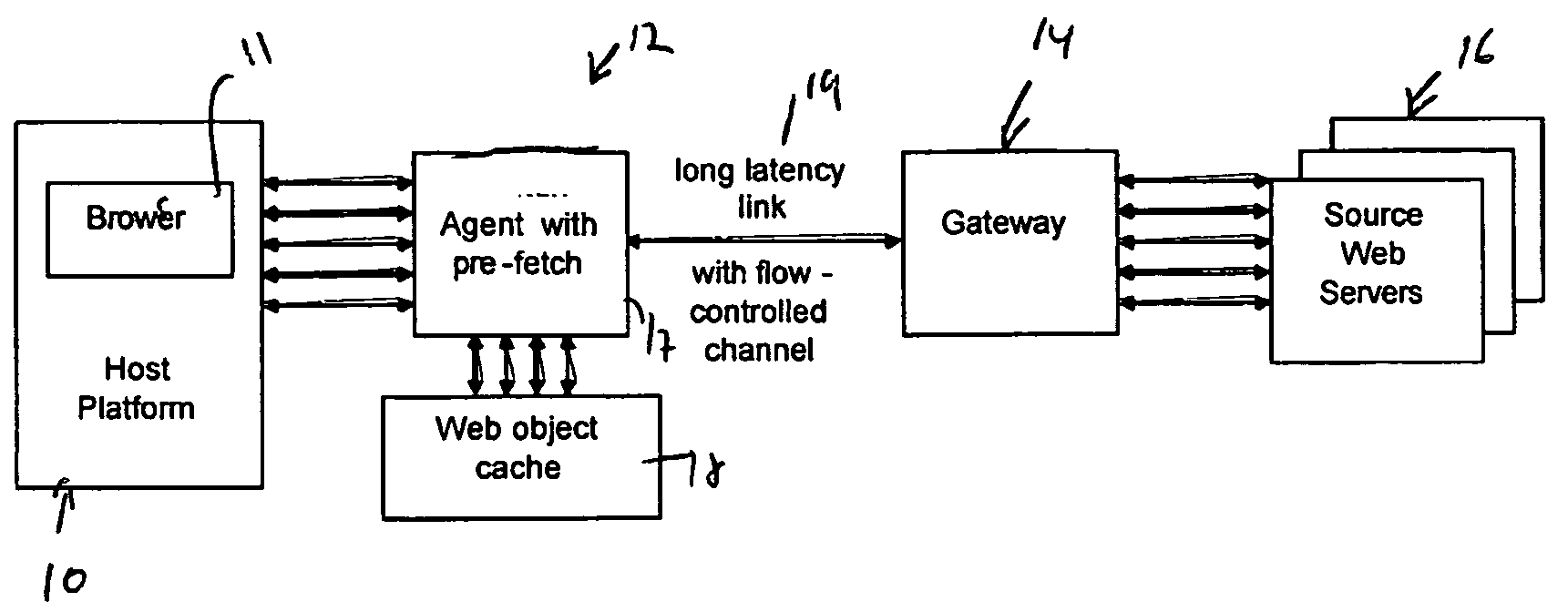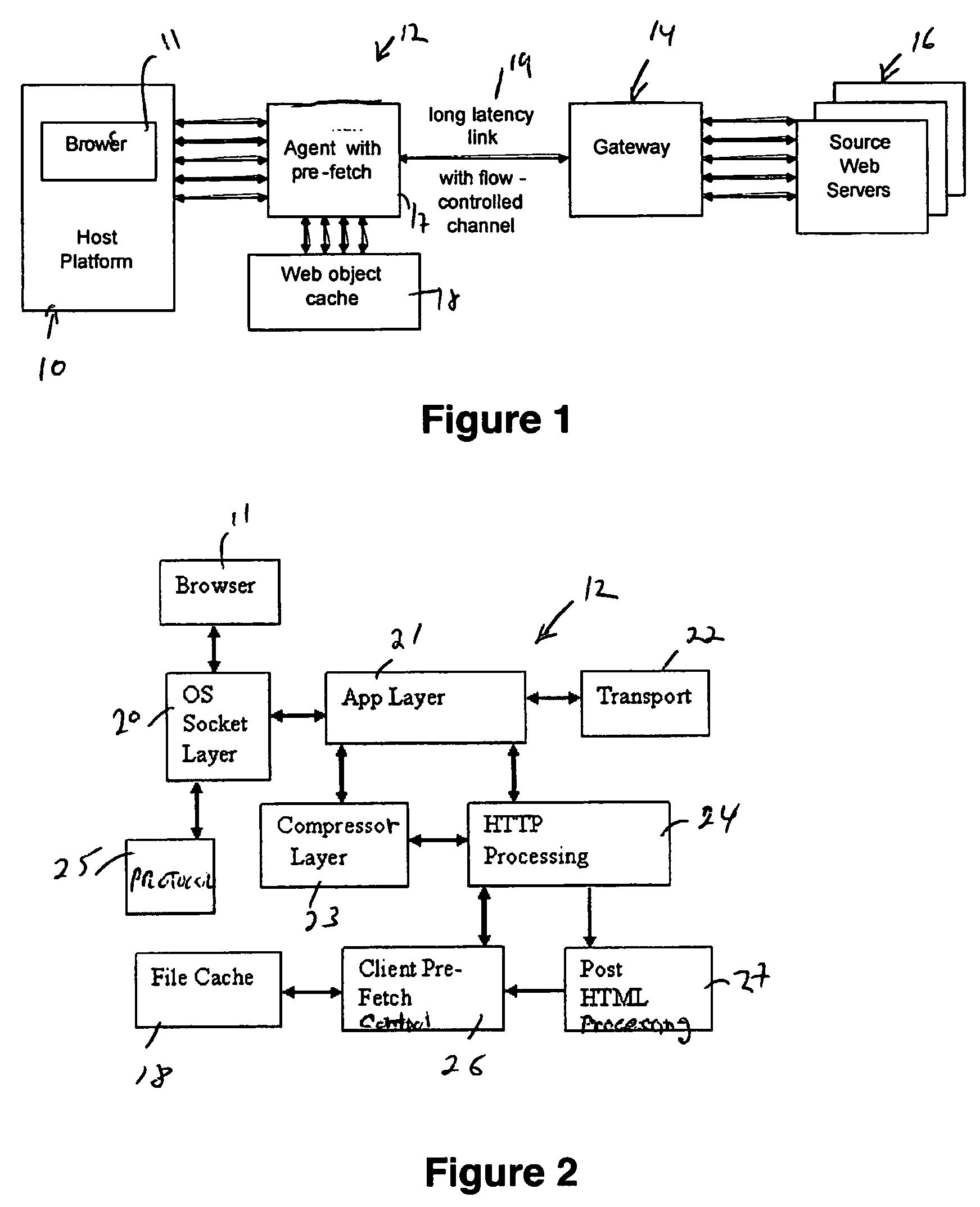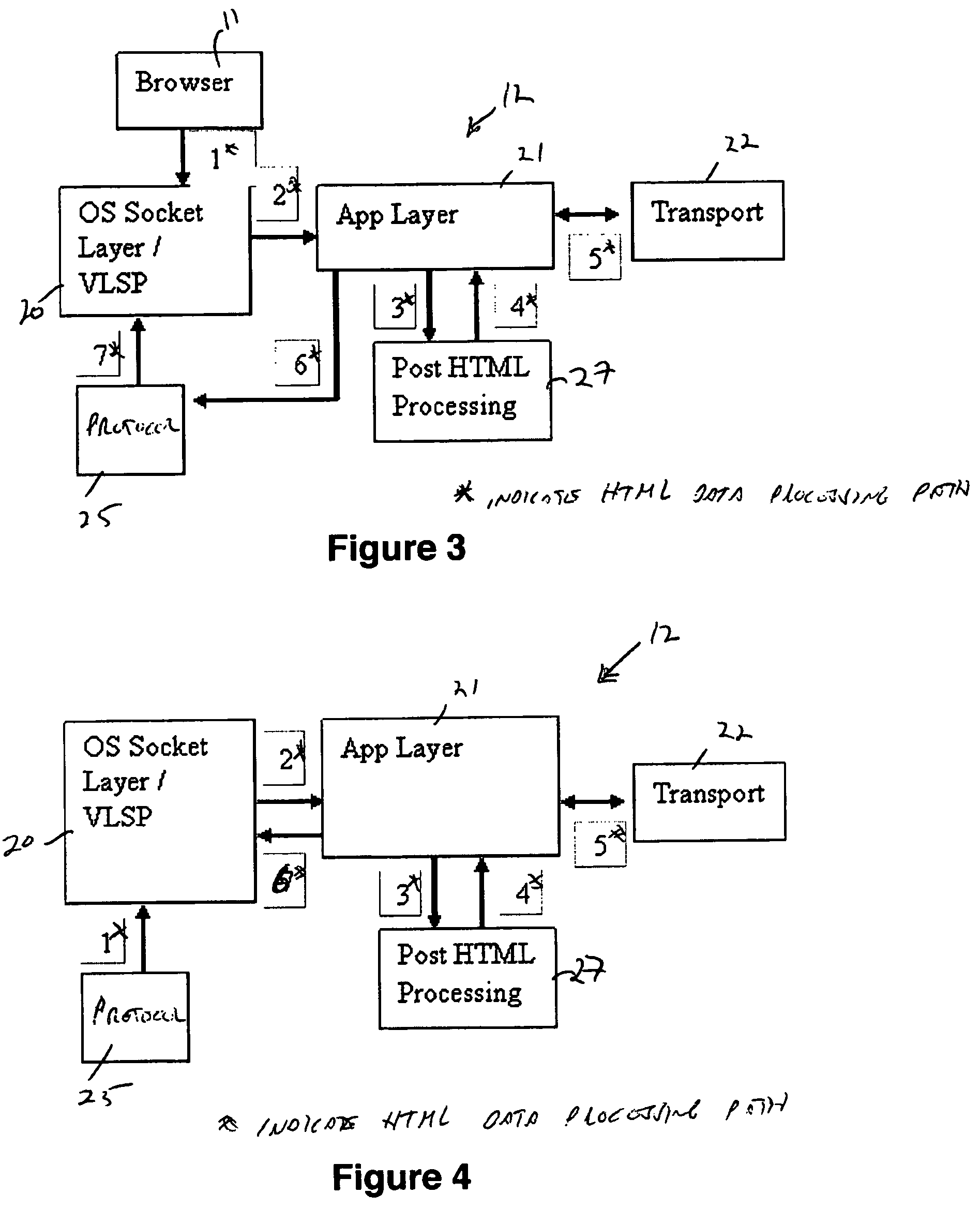Method and apparatus for increasing performance of HTTP over long-latency links
a technology of long-latency links and methods, applied in the field of improving the performance of computer networks, can solve the problems of low utilization of long-latency links and the major latency experienced by the end user, and achieve the effects of no latency and bandwidth limitation, no negative impact of sequential access, and increasing the degree of parallelism
- Summary
- Abstract
- Description
- Claims
- Application Information
AI Technical Summary
Benefits of technology
Problems solved by technology
Method used
Image
Examples
Embodiment Construction
[0016]Definitions
[0017]HTTP: Hyper Text Transfer Protocol—a TCP / IP based protocol to transfer Web pages, documents, etc. over the Internet.
[0018]HTML: Hyper Text Markup Language.
[0019]API: Application Programming Interface.
[0020]VTP: A Transport Protocol.
[0021]XML: Extension Hyper Text Markup Language.
[0022]As of today, publicly available HTTP browsers open a limited number of concurrent TCP connections to Web servers due to the decreased flow control effect as the number of TCP connections increase. This limits the degree of concurrency for the downloading of page objects. The HTTP1.1 Pipelining standard supra. tries to solve this problem by allowing the sending out of multiple requests through the same TCP connection before their responses are received. However, due to backward compatibility and the limitations of browsers and servers, the degree of concurrency is often low.
[0023]In addition, several types of objects, such as JavaScripts and Cascading Style Sheets, are often downl...
PUM
 Login to View More
Login to View More Abstract
Description
Claims
Application Information
 Login to View More
Login to View More - R&D
- Intellectual Property
- Life Sciences
- Materials
- Tech Scout
- Unparalleled Data Quality
- Higher Quality Content
- 60% Fewer Hallucinations
Browse by: Latest US Patents, China's latest patents, Technical Efficacy Thesaurus, Application Domain, Technology Topic, Popular Technical Reports.
© 2025 PatSnap. All rights reserved.Legal|Privacy policy|Modern Slavery Act Transparency Statement|Sitemap|About US| Contact US: help@patsnap.com



